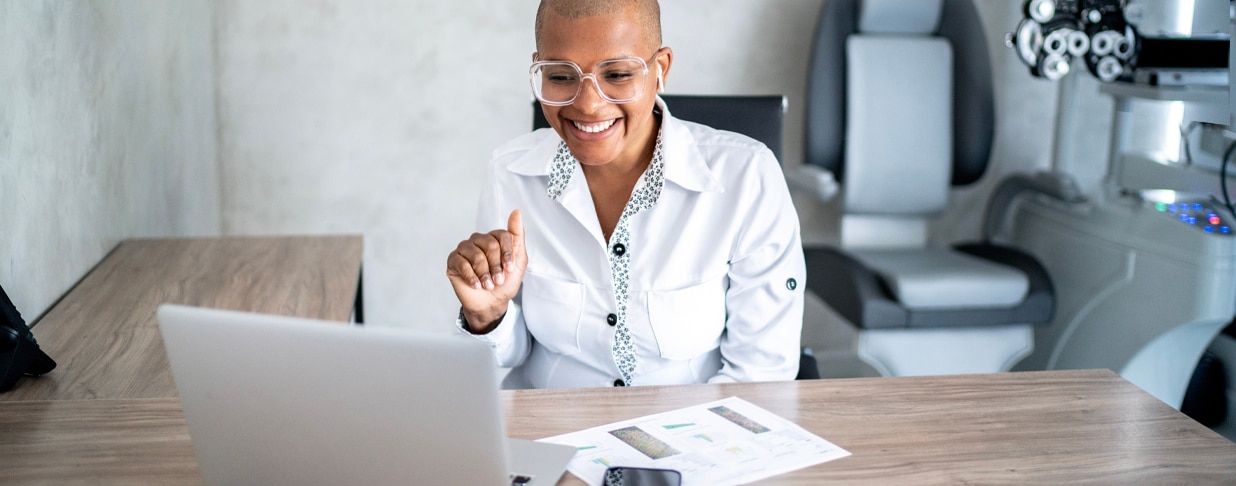Our medical directors, Dr. Lahr and Dr Neighbors, discuss why the term "online eye exam" can be misleading. And why online exams are not the same as a comprehensive eye exam.
Online vision tests, often done on smartphones or computers, offer visual acuity screenings primarily for prescription renewals or to verify current prescriptions. However, these online tests are less accurate than in-person exams for changing prescriptions. And while they may be useful for emergency prescription verification, they can't replace regular eye doctor visits.
Getting an eye exam is not just about needing glasses — it’s also about overall health. An eye exam can detect eye health problems like glaucoma or cataracts, but it may also help identify signs of serious diseases, like high blood pressure, diabetes and high cholesterol—just to name a few.
Remote doctor exams: bridging gaps in access to care
The rise of remote doctor exams, also known as telehealth or tele-optometry exams, offers a promising solution to accessibility issues, especially in rural areas. In this model, patients visit an eye clinic but interact in real-time with a remote doctor present on a monitor. The remote doctor guides the eye exam using onsite technicians and remotely controlled exam instruments. This method is effective for routine exams in generally healthy patients, but it has limitations. Direct observation of eye structures for diagnosing diseases, a key part of in-person exams, remains challenging in remote eye exams.
EyeMed providers must apply and meet specific requirements for telehealth exams. These include having the doctor visible on screen throughout the exam and informing patients prior to their appointment that the doctor won't be physically present. High-risk patients must also be excluded from these remote exams.
Expanding telehealth beyond exams
Telehealth isn’t limited to exams; it extends to various aspects of eye care. Providers can schedule follow-up appointments, remotely monitor certain eye conditions, and use specialized take-home devices or smartphone apps for specific measurements, like intraocular pressure for glaucoma management. These telehealth services are often billed through patients' medical plans.
Looking ahead: embracing technological advancements
As technology advances, we expect further improvements in remote eye and vision testing. However, for now, prioritizing in-person comprehensive eye exams is crucial for optimal eye health management. By staying informed about the possibilities and limitations of telehealth in eye care, we can responsibly navigate these advancements and ensure patients receive the highest quality care, regardless of their location or circumstances.
To learn more, speak with your EyeMed representative or visit eyed.com




